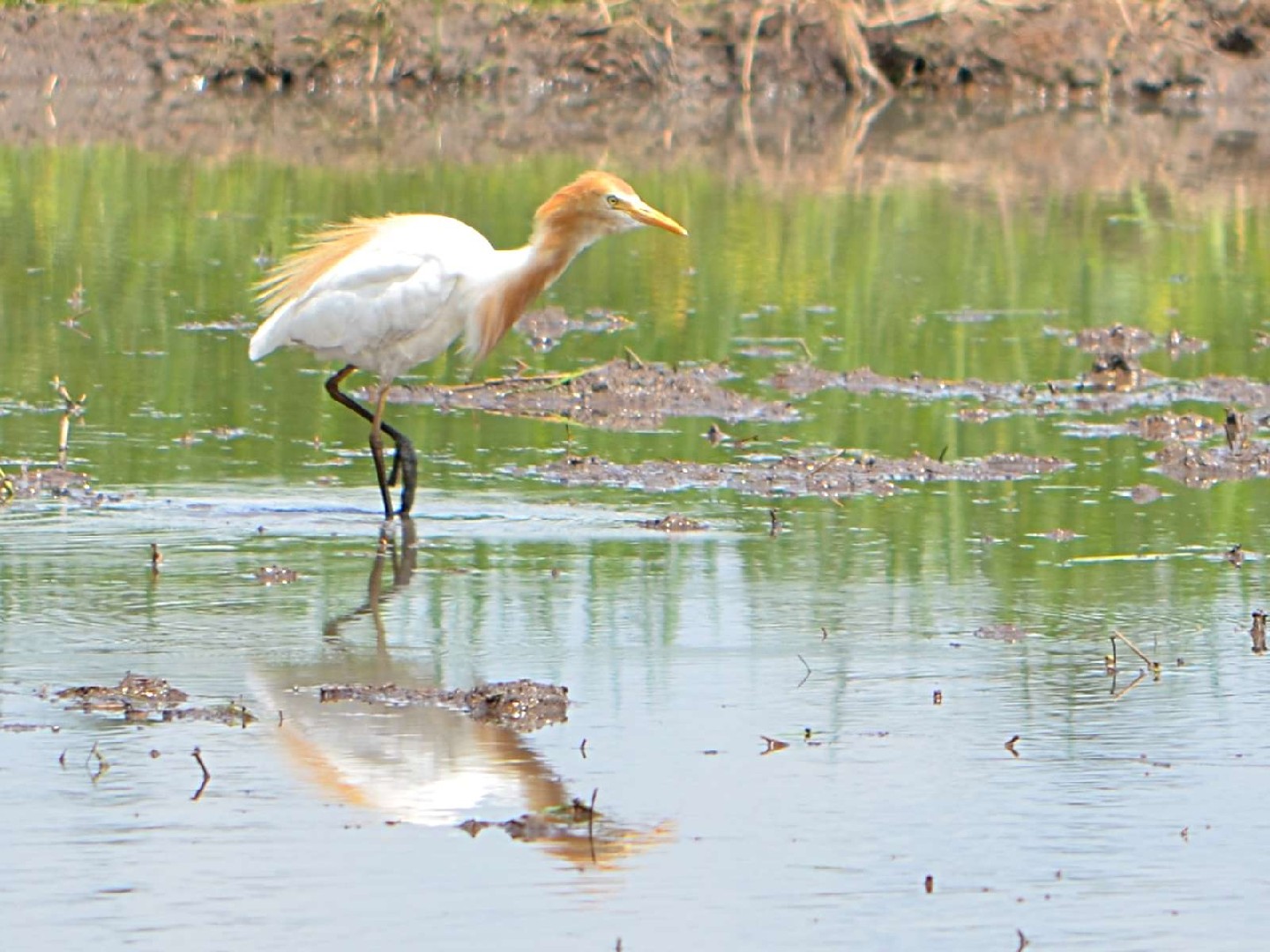Eastern Cattle Egret
A species of Bubulcus Egrets Scientific name : Bubulcus coromandus Genus : Bubulcus Egrets
Eastern Cattle Egret, A species of Bubulcus Egrets
Botanical name: Bubulcus coromandus
Genus: Bubulcus Egrets
 Photo By Ariefrahman , used under CC-BY-SA-3.0 /Cropped and compressed from original
Photo By Ariefrahman , used under CC-BY-SA-3.0 /Cropped and compressed from original Description
The cattle egret is a stocky heron with an 88–96 cm (35–38 in) wingspan; it is 46–56 cm (18–22 in) long and weighs 270–512 g (9.5–18.1 oz). It has a relatively short thick neck, a sturdy bill, and a hunched posture. The non-breeding adult has mainly white plumage, a yellow bill and greyish-yellow legs. The eastern cattle egret differs from the western species in breeding plumage, when the buff colour on its head extends to the cheeks and throat, and the plumes are more golden in colour. The bill and tarsus are longer on average. It is also smaller and shorter-winged. It has white cheeks and throat, but the nuptial plumes are golden. The positioning of the egret's eyes allows for binocular vision during feeding, and physiological studies suggest that the species may be capable of crepuscular or nocturnal activity. Adapted to foraging on land, they have lost the ability possessed by their wetland relatives to accurately correct for light refraction by water. This species gives a quiet, throaty rick-rack call at the breeding colony, but is otherwise largely silent. 
Size
46 - 56 cm
Life Expectancy
23 years
Nest Placement
Tree
Feeding Habits
Eastern Cattle Egret forages alongside cattle, feeding on insects like grasshoppers, crickets, and flies. It also consumes moths, spiders, frogs, and earthworms, with an occasional ripe fig. Its diet exemplifies a unique adaptation to follow livestock for disturbances that flush out prey.
Habitat
Fields and dry grassy 
Dite type
Insectivorous
Migration Overview
Some populations of cattle egrets are migratory, others are dispersive, and distinguishing between the two can be difficult for this species. In many areas populations can be both sedentary and migratory. In the northern hemisphere, migration is from cooler climes to warmer areas, but cattle egrets nesting in Australia migrate to cooler Tasmania and New Zealand in the winter and return in the spring. Populations in southern India appear to show local migrations in response to the monsoons. They move north from Kerala after September. During winter, many birds have been seen flying at night with flocks of Indian pond herons (Ardeola grayii) on the south-eastern coast of India, and a winter influx has also been noted in Sri Lanka. 
General Info
Feeding Habits
Bird food type
Distribution Area
In Australia, colonisation began in the 1940s, with the species establishing itself in the north and east of the continent. It began to regularly visit New Zealand in the 1960s. The expansion of the eastern cattle egret's range is due to its relationship with humans and their domesticated animals. Originally adapted to a commensal relationship with large grazing and browsing animals, it was easily able to switch to domesticated cattle and horses. As the keeping of livestock spread throughout the world, the cattle egret was able to occupy otherwise empty niches. Many populations of cattle egrets are highly migratory and dispersive, and this has helped the species' range expansion. Although the cattle egret sometimes feeds in shallow water, unlike most herons it is typically found in fields and dry grassy habitats, reflecting its greater dietary reliance on terrestrial insects rather than aquatic prey. 
Scientific Classification
Phylum
Chordates Class
Birds Order
Pelicans and Relatives Family
Herons Genus
Bubulcus Egrets Species
Eastern Cattle Egret